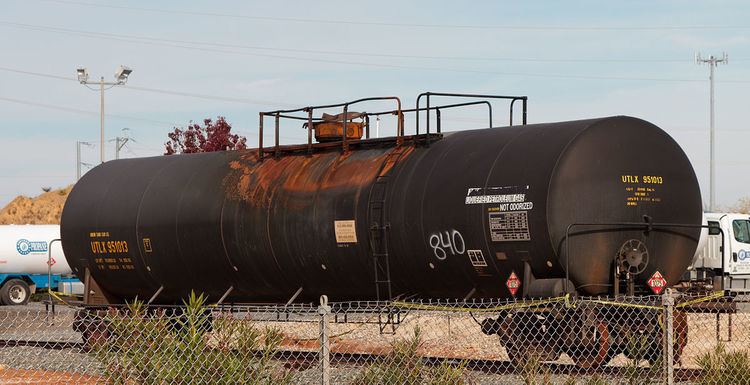 | ||
The HAZMAT Class 2 in United States law includes all gases which are compressed and stored for transportation. Class 2 has three divisions: Flammable (also called combustible), Non-Flammable/Non-Poisonous, and Poisonous. This classification is based on the United Nations' Recommendations on the Transport of Dangerous Goods - Model Regulations. In Canada, the Transportation of Dangerous Goods Regulations, or TDGR, are also based on the UN Model Regulations and contain the same three divisions.
Divisions
A gas is a substance which
- (a) at 50 °C (122 °F) has a vapor pressure greater than 300 kPa or
- (b) is completely gaseous at 20 °C (68 °F) at a standard pressure of 101.3 kPa
- Gases assigned to one of three divisions
- division 2.1 Flammable gas
- division 2.2 Non flammable, Non-toxic gas
- division 2.3 Toxic gas
Division 2.2: Non-Flammable, Non-Toxic Gas
This division includes compressed gas, liquefied gas, pressurized cryogenic gas, compressed gas in solution, asphyxiant gas and oxidizing gas. A non-flammable, nonpoisonous compressed gas (Division 2.2) means any material (or mixture) which:
- Exerts in the packaging an absolute pressure of 280 kPa (40.6 psia) or greater at 20 °C (68 °F), and
- Does not meet the definition of Division 2.1 or 2.3.
Division 2.3: Toxic Gas
Gas poisonous by inhalation means a material which is a gas at 20 °C or less and a pressure of 101.3 kPa (a material which has a boiling point of 20 °C or less at 101.3kPa (14.7 psi)) and which:
- Is known to be so toxic to humans as to pose a hazard to health during transportation, or
- In the absence of adequate data on human toxicity, is presumed to be toxic to humans because when tested on laboratory animals it has an LC50 value of not more than 5000 ml/m³. See 49CFR 173.116(a) for assignment of Hazard Zones A, B, C or D. LC50 values for mixtures may be determined using the formula in 49 CFR 173.133(b)(1)(i)
